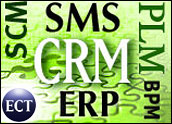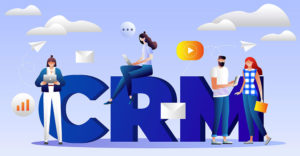
Gartner’s CRM conference is always a big event for the industry. The 2008 gathering, which just wrapped, was no different, with attendees leaving the Gaylord National Resort and Conference Center in Oxon Hill, Md., in a thoughtful mood over the direction CRM is heading.
Not surprisingly, there was a lot of buzz around social networking, Heidi Cerenzia, director of marketing for Chordiant Software, told CRM Buyer.
“Three great sessions were Gene [Alvarez’] ‘Web 2.0,’ Jim Davies’ ‘The Role of Technology in Improving CE’ and Matt Goldman’s ‘Magic Quadrant criteria’ session,” she said.
Basics Revisited
In addition to the hot topics of the day, the event touched upon some fundamental issues, Yuval Brisker, CEO of TOA Technologies, told CRM Buyer.
“It was a very comprehensive event, covering all the issues that vendors need to be thinking about right now,” he said, “but the overriding theme at the conference was an emphasis on the customer experience.
RightNow CMO Jason Mittelstaedt, another attendee, seconded that.
“Over the last four or five years, people in this industry have been talking about the customer experience as though it were some kind of fad,” he told CRM Buyer. Gartner’s focus on it throughout the conference signaled that the industry now sees it as “a long-term differentiator.”
Still, it is puzzling that even though CRM investments continue to grow, customer satisfaction scores remain flat, attendee Guy MacNeill, vice president of marketing for Inquisite, told CRM Buyer.
“While 85 percent of companies say they do a good job collecting feedback from their customers, only 10-to-15 percent are actually taking specific action on that data to change the customer experience,” he pointed out. “Why collect all of this information and not act on it? We need better analytics to process and act on data.”
Another interesting view comes from David Sherriff, COO at Microgen, who attended Gartner’s BPM (business process management) Summit, which took place at the same time as the CRM event.
“What was interesting to me was talking with CRM experts about the intersection of CRM and BPM and how technologies are — or aren’t — able to support both,” Sherriff told CRM Buyer.
“CRM is about the stuff that’s ultimately customer-facing,” he noted, “but without the right processes underneath it all, the best CRM strategy can’t work. I think co-locating these events was a great message to send about the need for holistic business process technologies, which impact every customer.”
Gartner 2.0 Recap
Not surprisingly, CRM bloggers offered diverse viewpoints as they summed up the conference about what they thought was most important.
This year, it was actually worthy of the “2.0” designation, remarked Paul Greenberg, a perennial speaker and attendee at this event. (He demoted it to “1.85” in 2006.)
“While I’m writing this, Dan Gilbert, Harvard Prof who specializes in social psychology, is doing a session entitled ‘Stumbling on Happiness,’ based on his book of the same name,” Greenberg wrote in a live blog post during the event. “Imagine that for a minute. An analyst conference with the subject matter of happiness. Lest you think they’ve gone soft in the right brain, don’t. Happiness is something that drives customers now, doesn’t it? When it comes down to it, its ALL based on how happy a customer is with your company (and, potentially you), isn’t it? The metrics that analyst firms throw at you and that you scarf up like chips during a game are just simply what ‘proves’ the case to you one way or the other. … The fact that these were areas of interest at a Gartner CRM Conference is a staggering change. Gartner is really getting it.”
Session by Session
For people who didn’t attend, Jeffrey Henning, chief strategy officer at Vovici, offers a great summary of some notable sessions:
Following are some of his takeaways:
- “Oracle argues that selling is fundamentally social, but that SFA is about reporting more, and selling less, as a result of an operational effort of pleasing management rather than customers. Truly social CRM allows account executives to report less, and sell more, becoming a sales productivity application.”
- Gartner analyst John Radcliff “indicated the following top 10 priorities for organizations to consider this year (based on a survey of Gartner analysts): Web 2.0, Cost/Growth/Innovation, SaaS, Modernization of applications, SOA/SOBA/SODA/EDA/BPP, CE/CRM, Application governance/PPM, Business process discipline, Application architectures, MDM/EIM.
“John had a lot of good content, but if you were playing ‘buzzword bingo,’ you would have your had best chance of winning during his presentation!”
- “Gartner analyst Gareth Herschel made the point that companies should pay special attention to ‘bad news.’ He quoted Despair.com’s service department: ‘We’re not satisfied until you’re not satisfied.’ He said, while it was tongue-in-cheek for Despair.com (a publisher of ‘demotivational’ posters), it was painfully true of many firms, who — too often — make providing negative feedback an arduous process, ‘putting the complaining customer into a penalty box.’ Negative feedback can often lead to the best insights.”
- “Jim Davies began with a compelling point: billions have been invested in CRM systems, yet customer satisfaction has not improved.
“His recommendations for improving customer experience included: Create technology matrices to prioritize which technologies your organization should invest in to improve the customer experience; Look for appropriate opportunities to embrace existing technologies; Focus on improving important attributes. And finally: Build an EFM system and explore more innovative feedback mechanisms.”
The Cons of Social CRM
Some of the discussion around Social CRM got Martin Schneider at SugarCRM thinking about related issues.
“How ethical (or legal) is it to leverage public user networks like facebook for traditional email marketing?
“Sure, we can find out that this contact went to college with someone on my sales team and reach out personally using that as an introduction, but will the time come where LinkedIn or Facebook networks can get imported into CRM systems as target lists for lead management? I’m not so sure it can or will happen like that. And that is probably a good thing,” Schneider concludes.
























































